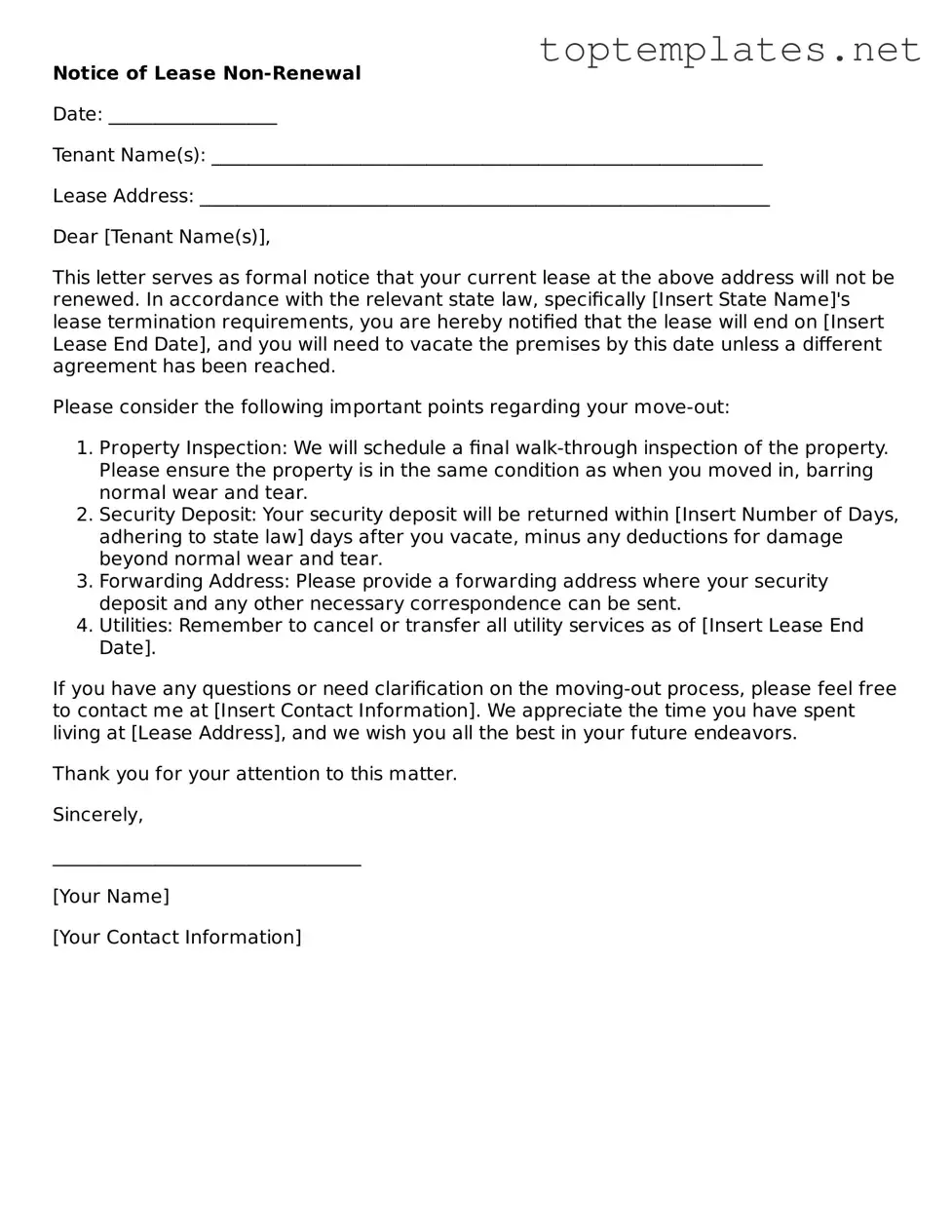Notice of Lease Non-Renewal
Date: __________________
Tenant Name(s): ___________________________________________________________
Lease Address: _____________________________________________________________
Dear [Tenant Name(s)],
This letter serves as formal notice that your current lease at the above address will not be renewed. In accordance with the relevant state law, specifically [Insert State Name]'s lease termination requirements, you are hereby notified that the lease will end on [Insert Lease End Date], and you will need to vacate the premises by this date unless a different agreement has been reached.
Please consider the following important points regarding your move-out:
- Property Inspection: We will schedule a final walk-through inspection of the property. Please ensure the property is in the same condition as when you moved in, barring normal wear and tear.
- Security Deposit: Your security deposit will be returned within [Insert Number of Days, adhering to state law] days after you vacate, minus any deductions for damage beyond normal wear and tear.
- Forwarding Address: Please provide a forwarding address where your security deposit and any other necessary correspondence can be sent.
- Utilities: Remember to cancel or transfer all utility services as of [Insert Lease End Date].
If you have any questions or need clarification on the moving-out process, please feel free to contact me at [Insert Contact Information]. We appreciate the time you have spent living at [Lease Address], and we wish you all the best in your future endeavors.
Thank you for your attention to this matter.
Sincerely,
_________________________________
[Your Name]
[Your Contact Information]
